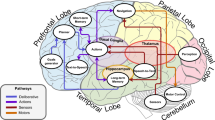Abstract
This paper describes PROFETA, a Python framework developed by the authors to write robot strategies by means of the Belief- Desire-Intention (BDI) programming paradigm. This paradigm has been proposed in the field of autonomous agents programming and can be successfully applied also to autonomous robots thanks to their behavioural similarity with software agents. The paper describes the BDI model and AgentSpeak, a formal declarative language suitably designed for BDI agents. Then it introduces PROFETA, which takes inspiration from AgentSpeak and is designed with the objective of adding declarative constructs (needed by a BDI model) to an object-oriented and imperative language like Python. The result is a flexible environment that combines the power of both the classical object-oriented paradigm—useful for algorithm and control loop programming—and declarative approach—useful for AI and strategy programming. A case-study, based on Eurobot 2010 competition, shows such abilities, highlighting the main characteristics and advantages of PROFETA in strategy design.
Access this chapter
Tax calculation will be finalised at checkout
Purchases are for personal use only
Preview
Unable to display preview. Download preview PDF.
Similar content being viewed by others
References
Siegwart, R., Nourbakhsh, I.: Introduction to Autonomous Mobile Robots. MIT Press, Cambridge (2004)
Arkin, R.C.: Behaviour-based Robotics. MIT Press, Cambridge (1998)
Murphy, R.R.: Introduction to AI Robotics. MIT Press, Cambridge (2001)
Santoro, C.: An erlang framework for autonomous mobile robots. In: ERLANG 20007: Proceedings of the 2007 ACM SIGPLAN Workshop on Erlang. ACM Press, New York (2007)
Russell, S., Norvig, P.: Artificial Intelligence: A Modern Approach, 2nd edn. Prentice Hall, Englewood Cliffs (2003)
Forgy, C.: The OPS Languages: An Historical Overview. PC AI (September 1995)
JESS Home Page (2003), http://herzberg.ca.sandia.gov/jess
CLIPS Home Page (2003), http://www.ghg.net/clips/CLIPS.html
Drools Home Page (2004), http://www.drools.org
Di Stefano, A., Santoro, C.: eXAT: an Experimental Tool for Programming Multi-Agent Systems in Erlang. In: AI*IA/TABOO Joint Workshop on Objects and Agents (WOA 2003), Villasimius, CA, Italy, September 10-11 (2003)
Di Stefano, A., Santoro, C.: On the Use of Erlang as a Promising Language to Develop Agent Systems. In: AI*IA/TABOO Joint Workshop on Objects and Agents (WOA 2004), Turin, Italy, October 29-30 (2004)
Di Stefano, A., Santoro, C.: Designing Collaborative Agents with eXAT. In: ACEC 2004 Workshop at WETICE 2004, Modena, Italy, June 14-16 (2004)
Stefano, A.D., Gangemi, F., Santoro, C.: ERESYE: Artificial Intelligence in Erlang Programs. In: ERLANG 2005: Proceedings of the 2005 ACM SIGPLAN Workshop on Erlang, pp. 62–71. ACM Press, New York (2005)
Nicosia, V., Santoro, C.: Experiences from Using Erlang for Autonomous Robots. In: In Proc. of 12th International Erlang User Conference, EUC 2006, Stockholm, Sweden (2006)
Rao, A.: AgentSpeak (L): BDI agents speak out in a logical computable language. In: Perram, J., Van de Velde, W. (eds.) MAAMAW 1996. LNCS, vol. 1038, pp. 42–55. Springer, Heidelberg (1996)
Rao, A., Georgeff, M.: BDI agents: From theory to practice. In: Proceedings of the First International Conference on Multi-Agent Systems (ICMAS 1995), San Francisco, CA, pp. 312–319 (1995)
Bratman, M.E.: Intentions, Plans and Practical Reason. Harvard University Press, Cambridge (1987)
Wooldridge, M., Ciancarini, P.: Agent-Oriented Software Engineering: The State of the Art. In: Ciancarini, P., Wooldridge, M.J. (eds.) AOSE 2000. LNCS, vol. 1957, pp. 55–82. Springer, Heidelberg (2001)
Jennings, N.: On agent-based software engineering. Artificial Intelligence 117(2), 277–296 (2000)
Bradshaw, J.M. (ed.): Software Agents. AAAI Press/The MIT Press (1997)
Weiss, G. (ed.): Multiagent Systems. The MIT Press, Redmond (1999)
Pokahr, A., Braubach, L., Lamersdorf, W.: Jadex: A BDI reasoning engine. Multiagent Systems Artificial Societies and Simulated Organizations 15, 149 (2005)
Howden, N., Rönnquist, R., Hodgson, A., Lucas, A.: JACK intelligent agents-summary of an agent infrastructure. In: 5th International Conference on Autonomous Agents, Citeseer (2001)
Ingrand, F., Georgeff, M., Rao, A.: An architecture for real-time reasoning and system control. IEEE Expert 7(6), 34–44 (1992)
Jason Home Page (2004), http://www.jason.sourceforge.net/
Hübner, J.F., Bordini, R.H., Wooldridge, M.J.: Programming declarative goals using plan patterns. In: Baldoni, M., Endriss, U. (eds.) DALT 2006. LNCS (LNAI), vol. 4327, pp. 123–140. Springer, Heidelberg (2006)
Author information
Authors and Affiliations
Editor information
Editors and Affiliations
Rights and permissions
Copyright information
© 2011 Springer-Verlag Berlin Heidelberg
About this paper
Cite this paper
Fichera, L., Marletta, D., Nicosia, V., Santoro, C. (2011). Flexible Robot Strategy Design Using Belief-Desire-Intention Model. In: Obdržálek, D., Gottscheber, A. (eds) Research and Education in Robotics - EUROBOT 2010. EUROBOT 2010. Communications in Computer and Information Science, vol 156. Springer, Berlin, Heidelberg. https://doi.org/10.1007/978-3-642-27272-1_5
Download citation
DOI: https://doi.org/10.1007/978-3-642-27272-1_5
Publisher Name: Springer, Berlin, Heidelberg
Print ISBN: 978-3-642-27271-4
Online ISBN: 978-3-642-27272-1
eBook Packages: Computer ScienceComputer Science (R0)




